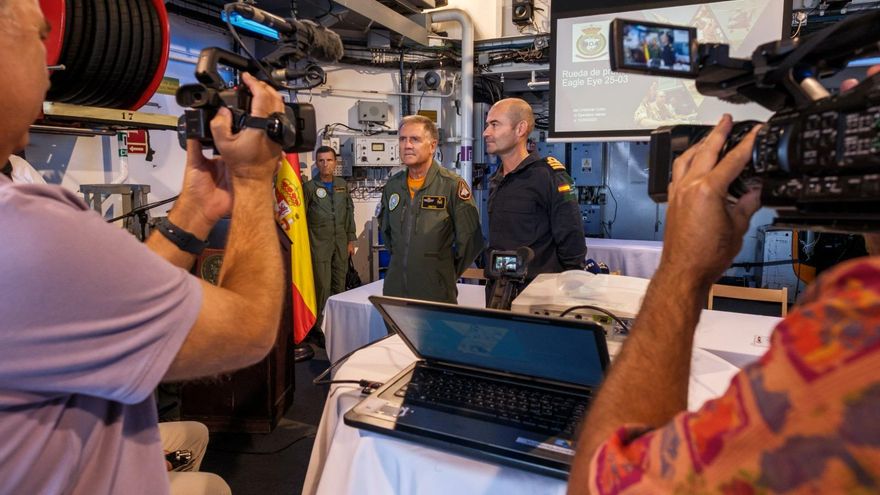Eagle Eye mission activates in the canaries amid global tensions
For the third time this year, the Eagle Eye mission has been activated in the Canary Islands, set against a backdrop of increasing international defense tensions. This iteration of the exercise is particularly significant as it follows the recent first-ever shootdown of enemy aircraft in a NATO member state, after Russian drones encroached on Polish airspace on September 9th.
A coordinated defense for national security
While the mission does not simulate specific scenarios, its core objective is to fully integrate the capabilities of the Spanish Air and Space Army, the Army, and the Navy within the National Air Defense system. This approach is designed to generate synergy and maximize the joint training of units, ultimately improving efficiency in presence, surveillance, and situation control operations.
Permanent state of alert
Regarding the tensions in Poland, Commander of the Air Operations Command, Julio Nieto Sampayo, stated that in Spain, “we are not only prepared but in a permanent state of alert. Our air surveillance and control system operates 24 hours a day, 365 days a year, guaranteeing continuous coverage.” Spanish defense maintains six aircraft on permanent alert, “ready to respond immediately to any type of threat, whether from drones or other types of incursions,” emphasized the Lieutenant General.
Evolving to meet the drone challenge
This defense commitment is constant and dynamic. “We continue to work tirelessly to improve our response capability, anticipating new threats that, like drones, are evolving rapidly and will play an increasingly major role in national security,” he added. Accordingly, this activation of Eagle Eye marks the first-time integration of Counter-Unmanned Aircraft System (C-UAS) teams. The goal is to evaluate their effectiveness and optimize coordination with State Security Forces for detecting and neutralizing small, remotely piloted threats.
The growing threat of unmanned aircraft
Julio Nieto Sampayo highlighted the current challenge posed by drones, noting that while they do not always represent a direct or intentional threat to aerial security, “their presence can cause numerous disruptions and increase the likelihood of incidents.” Therefore, he stressed that systems against Unmanned Aerial Vehicles (UAVs) must be “increasingly efficient and feature expanded deployment to effectively detect, neutralize, and mitigate this potential threat.”
Military deployment for eagle eye
In this third edition of Eagle Eye for 2025, the Air and Space Army’s participation will include six F-18s from the 12th Wing, deployed from the Torrejón de Ardoz base in Madrid. These aircraft are on Quick Reaction Alert (QRA) duty, a service that ensures the capability to be airborne in less than 15 minutes from the detection of an unidentified track. To achieve this, the 12th Wing will deploy up to 60 military personnel—including crews and maintenance and support staff—to the Gando Air Base.
A mission of integration and readiness
“The entire unit faces the challenge of guaranteeing Spain’s aerial security and defense with enthusiasm and ambition,” stated Commander Miguel Jiménez Barragán of the 12th Wing. He believes this is a prime opportunity to integrate the F-18 fighters with other land and naval assets in the Canary Islands. Furthermore, this deployment will integrate small Counter-Unmanned Aircraft System (C-UAS LSS) assets with participation from the Air Deployment Support Squadron (EADA), the Army, the Navy, and State Security Forces. The Alert and Control Group (Grualercon), located at Gando Air Base, will be responsible for surveilling the airspace using data provided by Air Surveillance Squadrons, as well as land and naval assets.

